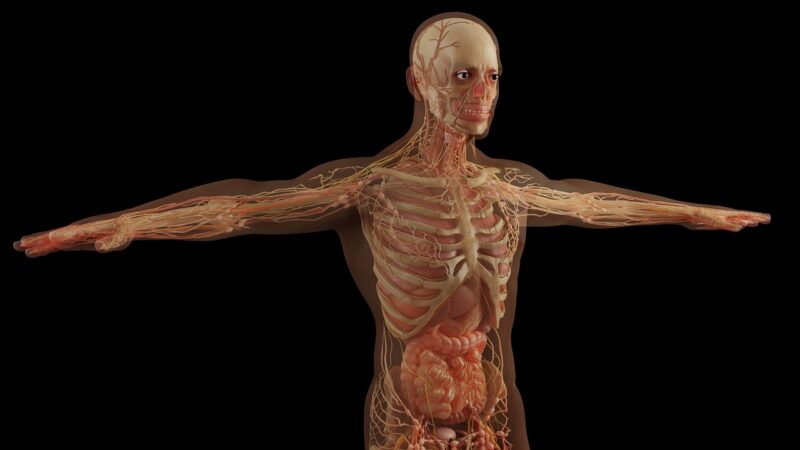
The human body possesses an incredible ability to heal itself, a complex process that is often taken for granted until we face an injury or illness. From the moment we suffer a cut or sprain to the gradual rebuilding of tissue, the body is engaged in a profound therapeutic journey. Understanding this process is not only fascinating but can also empower us to take better care of our bodies and facilitate healing.
1. The Basics of Healing: An Overview
Healing is defined as the restoration of health following injury or illness. This multifaceted process generally involves three stages: inflammation, proliferation, and remodeling.
**Inflammation**:
This is the body’s initial response to injury. When tissues are damaged, the body sends a rush of blood to the affected area, which leads to redness, heat, swelling, and pain. During this phase, white blood cells work to remove pathogens and debris and prepare the site for healing.
**Proliferation**:
In the second phase, the body begins to rebuild tissues. New cells are generated, and blood vessels are formed to nourish the area. This phase can last from a few days to several weeks depending on the severity of the injury.
**Remodeling**:
The final step in the healing process involves the reorganization of collagen fibers and the strengthening of the new tissue. This phase can take several months to years, as the new tissue matures and aligns along tension lines to regain strength and functionality.
2. The Role of Cells in Healing
Cells are the fundamental units of healing. Numerous types of cells play specialized roles throughout the healing process:
**Platelets**:
These cells are among the first responders to an injury, forming a clot to stop bleeding and initiating the healing cascade by releasing growth factors that aid in repair.
**White Blood Cells**:
Their primary function is to fight infection. They clear out debris and pathogens, making it easier for the body to start the healing process.
**Fibroblasts**:
These cells generate collagen and extracellular matrix components that serve as the building blocks for new tissue.
**Endothelial Cells**:
These cells line blood vessels and are instrumental in forming new blood vessels (angiogenesis) necessary to supply nutrients to regenerating tissues.
**Stem Cells**:
Found in various tissues, stem cells can differentiate into multiple cell types, enabling the body to generate specific cells needed for repair.
Together, these cells form a synergistic network that orchestrates the healing process.
3. The Healing Process: A Closer Look
To understand how our bodies heal, let’s look more closely at each stage of healing:
**3.1 Inflammation Phase**
– **Vasodilation**: Blood vessels expand to increase blood flow to the area.
– **Exudate Formation**: Fluids leak from damaged blood vessels, bringing necessary proteins and nutrients to the site.
– **Cellular Response**: White blood cells move in to digest debris and prevent infection.
**3.2 Proliferation Phase**
– **Wound Closure**: Fibroblasts produce collagen, which binds the wound together.
– **Neovascularization**: New blood vessels form to enhance nutrient delivery.
– **Matrix Formation**: The extracellular matrix provides structural support for cells to migrate and proliferate.
**3.3 Remodeling Phase**
– **Collagen Remodeling**: Collagen fibers become more organized and stronger.
– **Scar Maturation**: The scar tissue softens and may change in appearance as blood supply reduces.
– **Functional Recovery**: The final structure and function return, allowing the area to regain strength and resilience.
4. Factors Influencing Healing
While our bodies are equipped with remarkable healing abilities, certain factors can influence the effectiveness and speed of healing:
**Nutrition**:
Eating a balanced diet rich in vitamins and minerals is crucial. Nutrients like vitamin C (collagen synthesis) and zinc (immune function) play vital roles in healing.
**Hydration**:
Proper hydration helps transport nutrients and waste products, while also supporting cellular health.
**Age**:
Younger individuals generally heal faster due to higher regenerative capacity, while older individuals may experience slower healing due to factors like reduced blood flow and diminished circulation.
**Comorbidities**:
Chronic diseases such as diabetes can impede healing by restricting blood flow and impairing immune function.
**Lifestyle Choices**:
Smoking, excessive alcohol consumption, and lack of physical activity can adversely affect circulation, blood flow, and overall healing capacity.
5. Harnessing the Power of Natural Healing
While the body is an adept healer, there are ways to support recovery:
**Rest**:
Allowing the body to rest minimizes additional strain and energy depletion, allowing healing processes to take precedence.
**Physical Therapy**:
Post-injury rehabilitation can enhance mobility, strength, and function while preventing excessive scar tissue formation.
**Natural Remedies**:
Numerous natural remedies such as turmeric, known for its anti-inflammatory properties, may also support healing.
**Mind-Body Connections**:
Practices like meditation, yoga, and mindfulness have been shown to reduce stress and positively influence healing by enhancing mental well-being and promoting relaxation.
6. Conclusion: Embracing the Miracle of Healing
The human body’s ability to heal itself is nothing short of miraculous. With a deeper understanding of the mechanisms at play, we can appreciate the complexity of our biology and take proactive steps to support our healing journey. By nourishing our bodies, adopting a healthy lifestyle, and allowing for proper recovery time, we can empower our natural healing process, ensuring that we emerge stronger and healthier.
As we learn more about the science of healing, we can better appreciate our bodies’ resilience and capacity for recovery, reminding us to prioritize our health and vitality every day.








